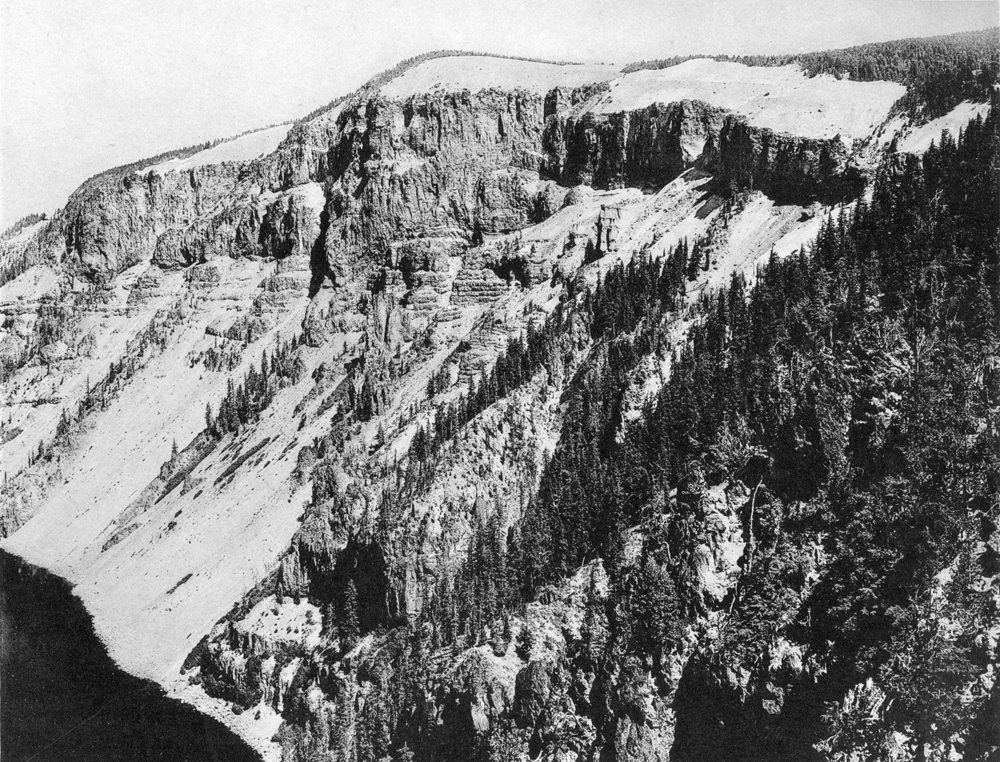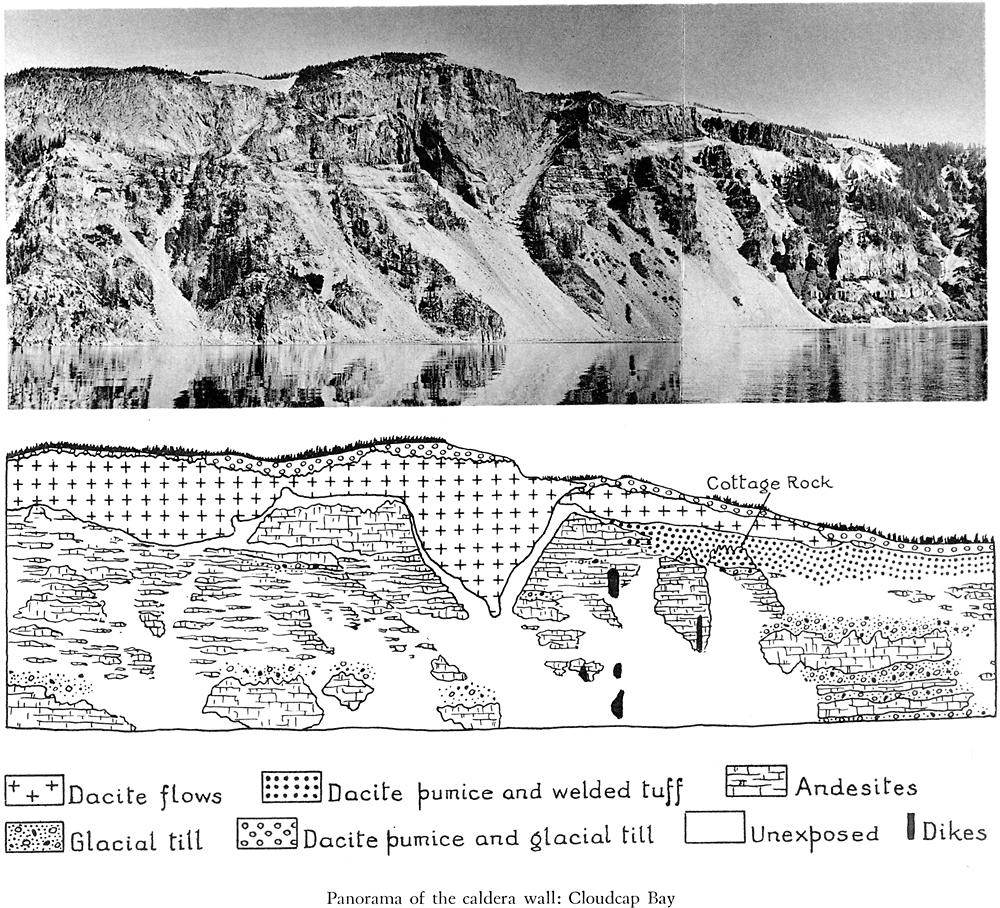For a distance of 3 miles along the caldera rim, south from Skell Head, three conspicuous layers can be recognized at once (see plate 10; plate 14, figure 2; plate 23), and a fourth can be distinguished by closer inspection. These layers are as follows:
I. A topmost layer of line pumice, scoria, and crystal ash, products of the culminating explosions of Mount Mazama, immediately before the formation of the caldera. The thickness varies between approximately 10 and 100 feet.
2. A coarse block layer, 40 feet thick on top of Sentinel Point, and between 20 and 70 feet thick above the Redcloud dacite. Though most of the blocks are angular and suggest the products of low-temperature explosions, there are many unmistakable glacial erratics, up to 8 feet in length. The balance of evidence suggests that this block layer is not of pyroclastic origin, but represents an extensive glacial moraine.
3. Below this, a third layer of coarse, silky lump pumice, usually about 40 feet in thickness and containing abundant bombs, many as much as 6 inches in diameter. Between 10 and 15 per cent of the deposit consists of angular lithic blocks of andesite, mostly less than 3 inches across, but occasionally 5 feet in maximum dimension.
4. A patchy bottom layer of bouldery glacial till resting on striated lava.
Of these four layers, the third, namely the coarse lump pumice layer, seems to be equivalent to the lump pumice beneath the welded tuff of the Wineglass. The only notable difference is the greater proportion of large lithic blocks. This correlation is supported by the fact that on the north rim of the caldera all four layers can be distinguished, though the glacial deposits are only preserved in patches, and the welded tuff intervenes between the lower pumice and upper till.
|
Plate 10. Redcloud Cliff, showing the great dacite flow overlain by: 1, pumice: 2, glacial till; 3, pumice; and underlain by an older dacite flow (upper right). Beneath the latter lie thick deposits of pumice and welded tuff, and then a succession of andesite flows. Three distinct glacial layers can be seen within 100 feet of the lake. Two thin layers of lava separate them. Two other glacial layers occur on these walls, but do not show well in the photograph. See, for comparison, panorama, plate 23. (Photograph by George Grant, National Park Service.) |
Plate 23. Panorama of the caldera wall: Cloudcap Bay



